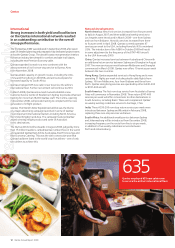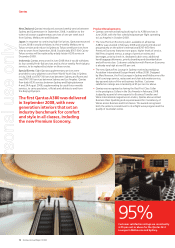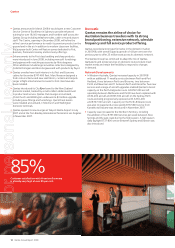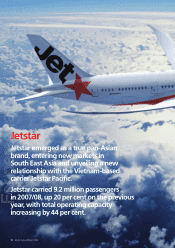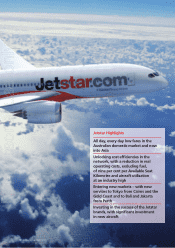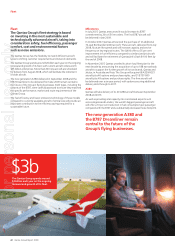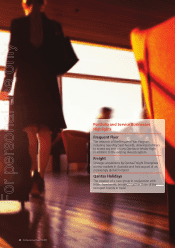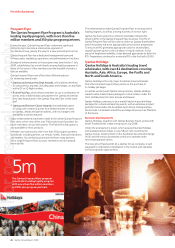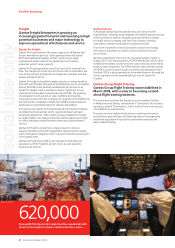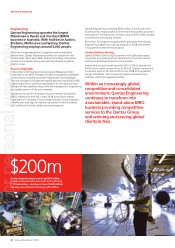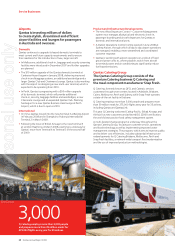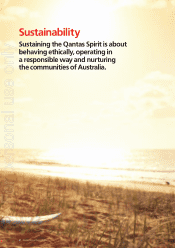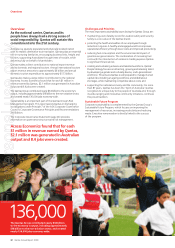Qantas 2008 Annual Report Download - page 24
Download and view the complete annual report
Please find page 24 of the 2008 Qantas annual report below. You can navigate through the pages in the report by either clicking on the pages listed below, or by using the keyword search tool below to find specific information within the annual report.
22 Qantas Annual Report 2008
Fleet
The Qantas Group’s fleet strategy is based
on investing in the most sustainable and
technologically advanced aircraft, taking into
consideration safety, fuel efficiency, passenger
comfort, cost and environmental factors
such as noise emissions.
The Qantas Group has the flexibility to match different aircraft
types to shifting customer requirements and network demands.
The Qantas Group spends around $3 billion each year on the ongoing
renewal and growth of its fleet, with current aircraft orders worth
$35 billion at list prices. More than 200 new aircraft are scheduled
for delivery from August 2008, which will facilitate the retirement
of older aircraft.
The new generation A380 delivered in September 2008 and the
B787 Dreamliner to be delivered from late 2009 remain central to
the future of the Group’s flying businesses. Both types, including the
variants of the B787, were carefully assessed to ensure they matched
the specific performance, market and route requirements of the
Qantas Group.
The fuel efficiency and lower emissions technology of these models
compared to currently available aircraft of similar size will provide an
important contribution to the efficiency savings required for a
sustainable future.
Milestones
In July 2007, Qantas announced it would increase its B787
commitment by 20 to 65 firm orders. The first B787 aircraft will
be delivered in late 2009.
In October 2007, Qantas announced the purchase of 12 additional
72-seat Bombardier Q400 aircraft. These aircraft, delivered from July
2008, fly at jet-like speeds and will increase capacity and service
frequency on key regional routes. The Q400 offers a 35 per cent
improvement in fuel efficiency compared to similar sized jet aircraft
and will facilitate the retirement of QantasLink’s Dash 8-100 fleet by
the end of 2008.
In November 2007, Qantas unveiled its short-haul fleet plan for the
next decade by announcing the acquisition of up to 188 narrowbody
aircraft to support the further growth of its two brands, Qantas and
Jetstar, in Australia and Asia. The Group will acquire 68 A320/A321
aircraft plus 40 options and purchase rights, and 31 B737-800
aircraft plus 49 options and purchase rights. The firm aircraft will
be delivered over a six-year period, with options securing additional
delivery slots through to 2017.
A380
Qantas will take delivery of its 20 A380 aircraft between September
2008 and 2013.
As well as providing vital capacity into constrained airports such
as Los Angeles and London, the world’s biggest passenger aircraft
will offer a 10 per cent reduction in fuel consumption per passenger
compared with the B747 and a substantially decreased noise footprint.
The new generation A380 and
the B787 Dreamliner remain
central to the future of the
Group’s flying businesses.
$3b $3b
The Qantas Group spends around
$3 billion each year on the ongoing
renewal and growth of its fleet.
Fleet
For personal use only


